Preface to the Third Edition
Preface to the Second Edition
Preface to the First Edition
The Nonlinear Optical Susceptibility
Introduction to Nonlinear Optics
Descriptions of Nonlinear Optical Processes
Formal Definition of the Nonlinear Susceptibility
Nonlinear Susceptibility of a Classical Anharmonic Oscillator
Properties of the Nonlinear Susceptibility
Time-Domain Description of Optical Nonlinearities
Kramers-Kronig Relations in Linear and Nonlinear Optics
Problems
References
Wave-Equation Description of Nonlinear Optical Interactions
The Wave Equation for Nonlinear Optical Media
The Coupled-Wave Equations for Sum-Frequency Generation
Phase Matching
Quasi-Phase-Matching
The Manley-Rowe Relations
Sum-Frequency Generation
Second-Harmonic Generation
Difference-Frequency Generation and Parametric Amplification
Optical Parametric Oscillators
Nonlinear Optical Interactions with Focused Gaussian Beams
Nonlinear Optics at an Interface
Problems
References
Quantum-Mechanical Theory of the Nonlinear Optical Susceptibility
Introduction
Schrödinger Calculation of Nonlinear Optical Susceptibility
Density Matrix Formulation of Quantum Mechanics
Perturbation Solution of the Density Matrix Equation of Motion
Density Matrix Calculation of the Linear Susceptibility
Density Matrix Calculation of the Second-Order Susceptibility
Density Matrix Calculation of the Third-Order Susceptibility
Electromagnetically Induced Transparency
Local-Field Corrections to the Nonlinear Optical Susceptibility
Problems
References
The Intensity-Dependent Refractive Index
Descriptions of the Intensity-Dependent Refractive Index
Tensor Nature of the Third-Order Susceptibility
Nonresonant Electronic Nonlinearities
Nonlinearities Due to Molecular Orientation
Thermal Nonlinear Optical Effects
Semiconductor Nonlinearities
Concluding Remarks
References
Molecular Origin of the Nonlinear Optical Response
Nonlinear Susceptibilities Calculated Using Time-Independent Perturbation Theory
Semiempirical Models of the Nonlinear Optical Susceptibility
Model of Boling, Glass, and Owyoung
Nonlinear Optical Properties of Conjugated Polymers
Bond-Charge Model of Nonlinear Optical Properties
Nonlinear Optics of Chiral Media
Nonlinear Optics of Liquid Crystals
Problems
References
Nonlinear Optics in the Two-Level Approximation
Introduction
Density Matrix Equations of Motion for a Two-Level Atom
Steady-State Response of a Two-Level Atom to a Monochromatic Field
Optical Bloch Equations
Rabi Oscillations and Dressed Atomic States
Optical Wave Mixing in Two-Level Systems
Problems
References
Processes Resulting from the Intensity-Dependent Refractive Index
Self-Focusing of Light and Other Self-Action Effects
Optical Phase Conjugation
Optical Bistability and Optical Switching
Two-Beam Coupling
Pulse Propagation and Temporal Solitons
Problems
References
Spontaneous Light Scattering and Acoustooptics
Features of Spontaneous Light Scattering
Microscopic Theory of Light Scattering
Thermodynamic Theory of Scalar Light Scattering
Acoustooptics
Problems
References
Stimulated Brillouin and Stimulated Rayleigh Scattering
Stimulated Scattering Processes
Electrostriction
Stimulated Brillouin Scattering (Induced by Electrostriction)
Phase Conjugation by Stimulated Brillouin Scattering
Stimulated Brillouin Scattering in Gases
Stimulated Brillouin and Stimulated Rayleigh Scattering
Problems
References
Stimulated Raman Scattering and Stimulated Rayleigh-Wing Scattering
The Spontaneous Raman Effect
Spontaneous versus Stimulated Raman Scattering
Stimulated Raman Scattering Described by the Nonlinear Polarization
Stokes-Anti-Stokes Coupling in Stimulated Raman Scattering
Coherent Anti-Stokes Raman Scattering
Stimulated Rayleigh-Wing Scattering
Problems
References
The Electrooptic and Photorefractive Effects
Introduction to the Electrooptic Effect
Linear Electrooptic Effect
Electrooptic Modulators
Introduction to the Photorefractive Effect
Photorefractive Equations of Kukhtarev et al.
Two-Beam Coupling in Photorefractive Materials
Four-Wave Mixing in Photorefractive Materials
Problems
References
Optically Induced Damage and Multiphoton Absorption
Introduction to Optical Damage
Avalanche-Breakdown Model
Influence of Laser Pulse Duration
Direct Photoionization
Multiphoton Absorption and Multiphoton Ionization
Problems
References
Ultrafast and Intense-Field Nonlinear Optics
Introduction
Ultrashort Pulse Propagation Equation
Interpretation of the Ultrashort-Pulse Propagation Equation
Intense-Field Nonlinear Optics
Motion of a Free Electron in a Laser Field
High-Harmonic Generation
Nonlinear Optics of Plasmas and Relativistic Nonlinear Optics
Nonlinear Quantum Electrodynamics
Problem
References
The SI System of Units
Further reading
The Gaussian System of Units
Further reading
Systems of Units in Nonlinear Optics
Relationship between Intensity and Field Strength
Physical Constants
Index

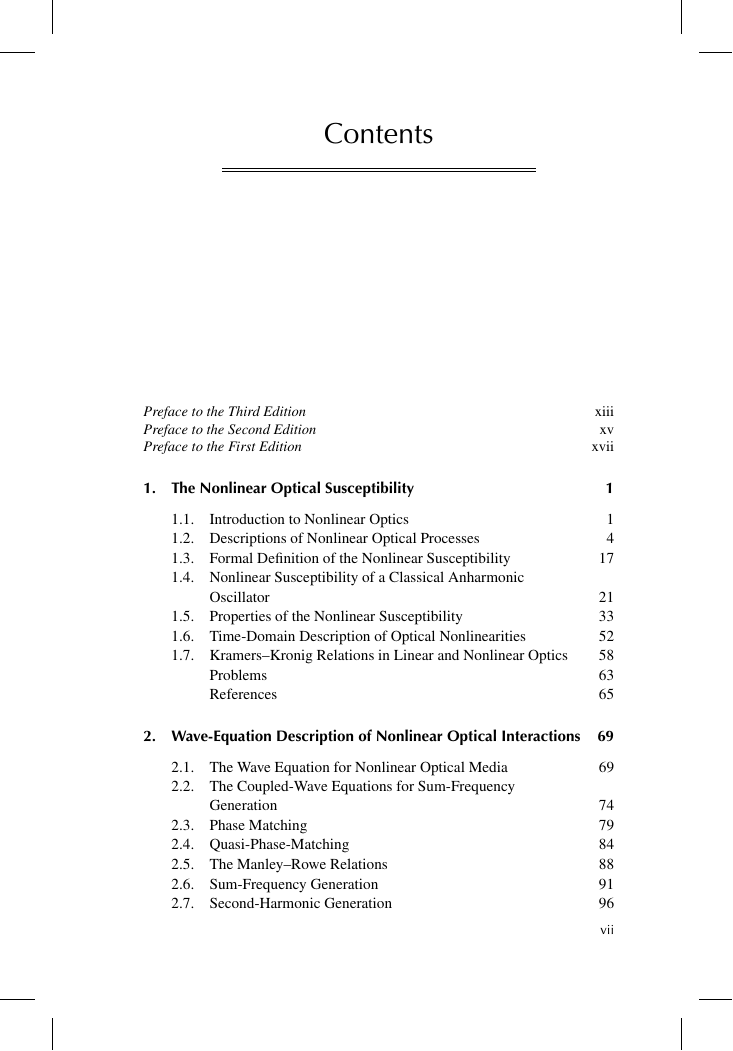
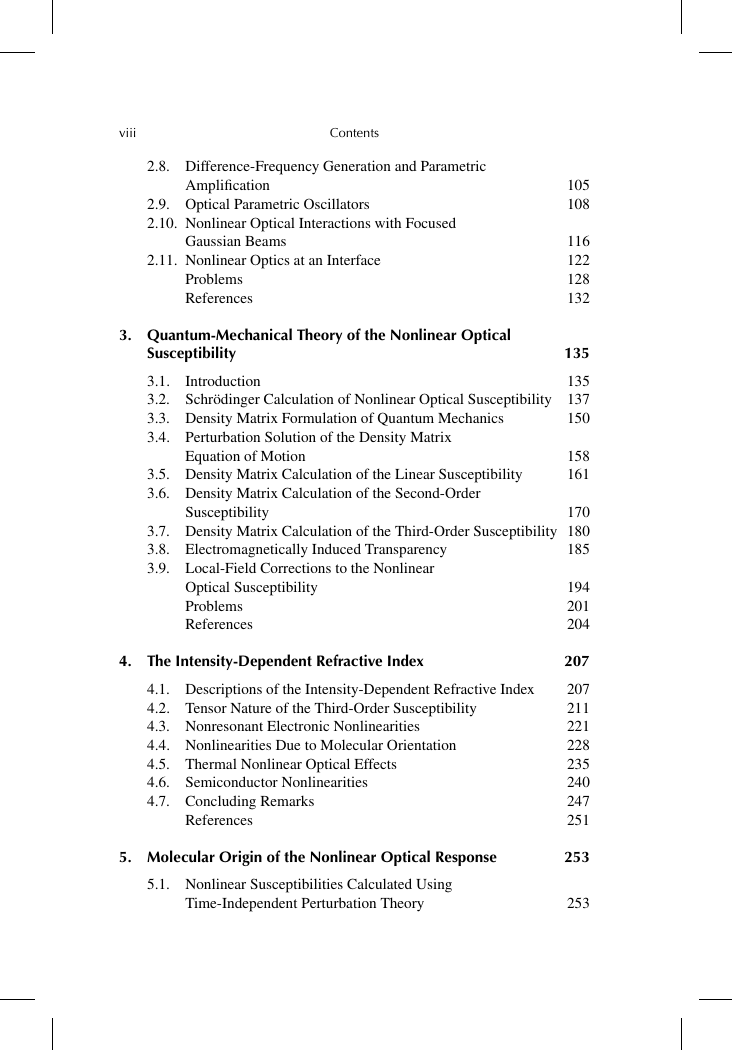
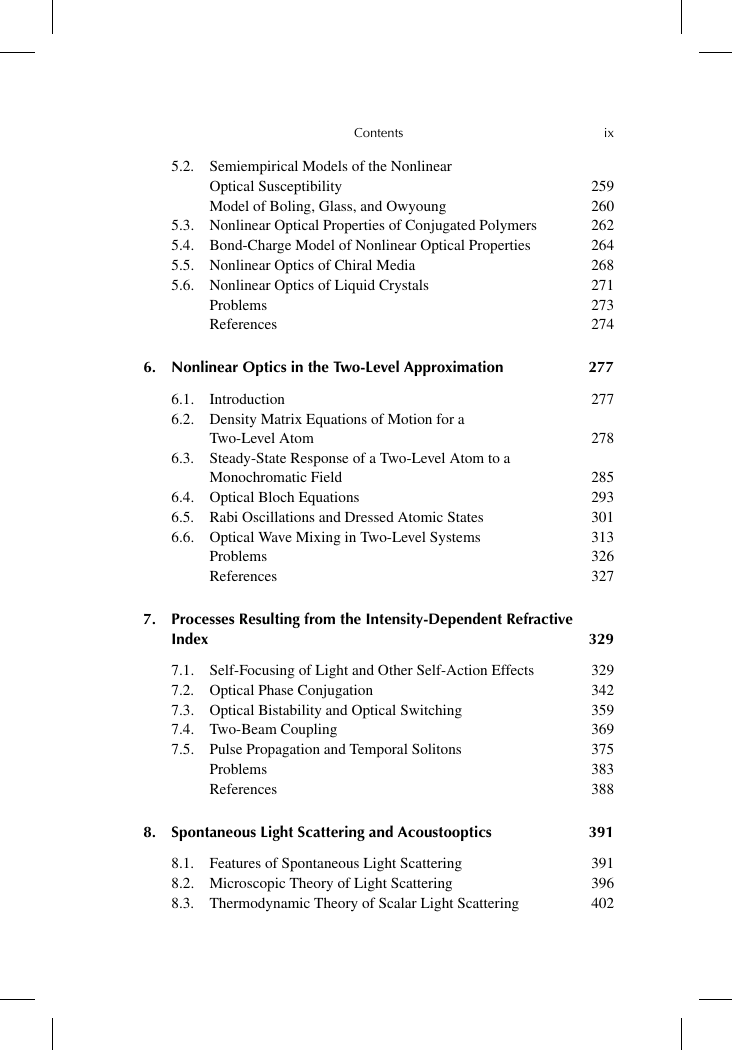
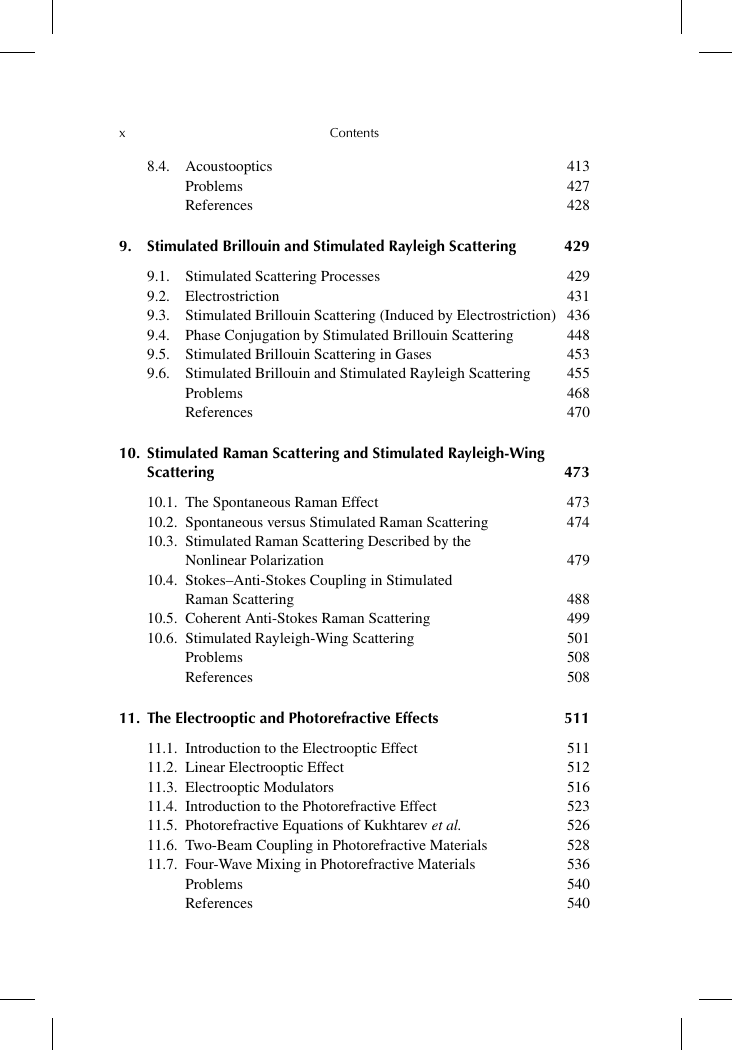
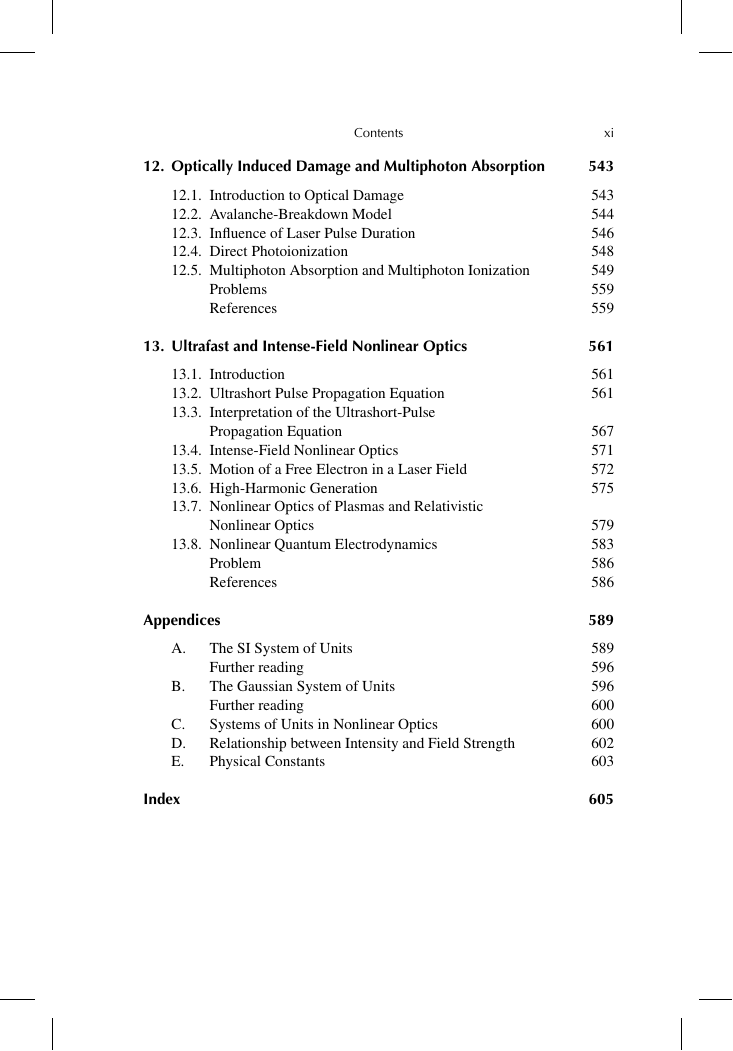
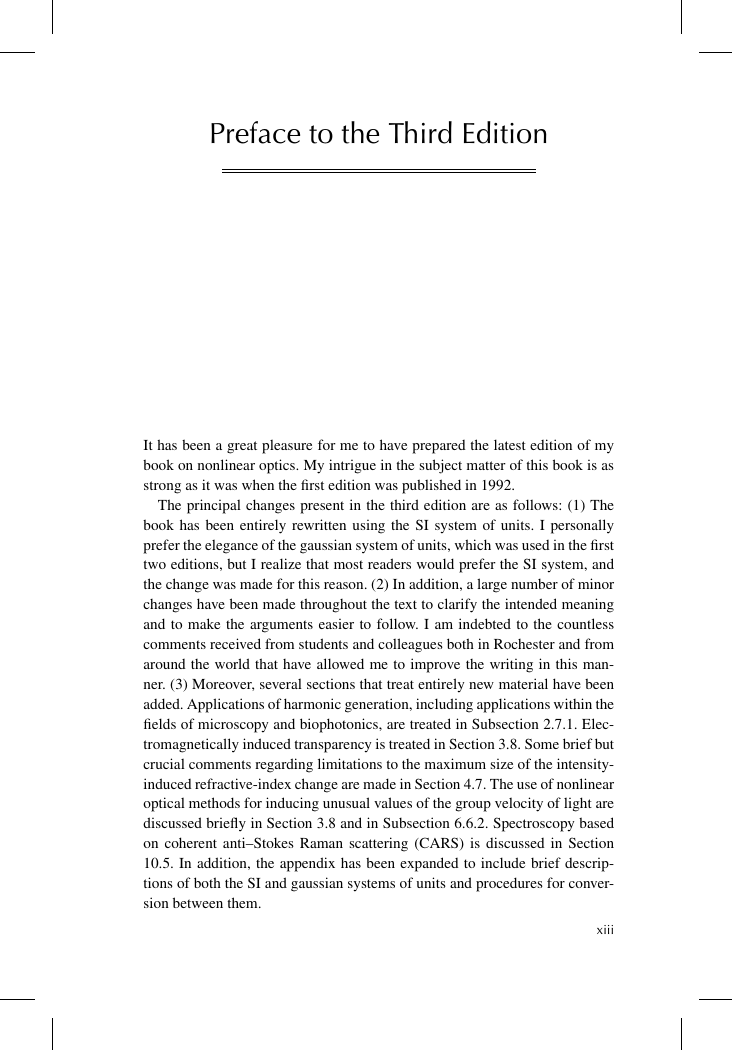
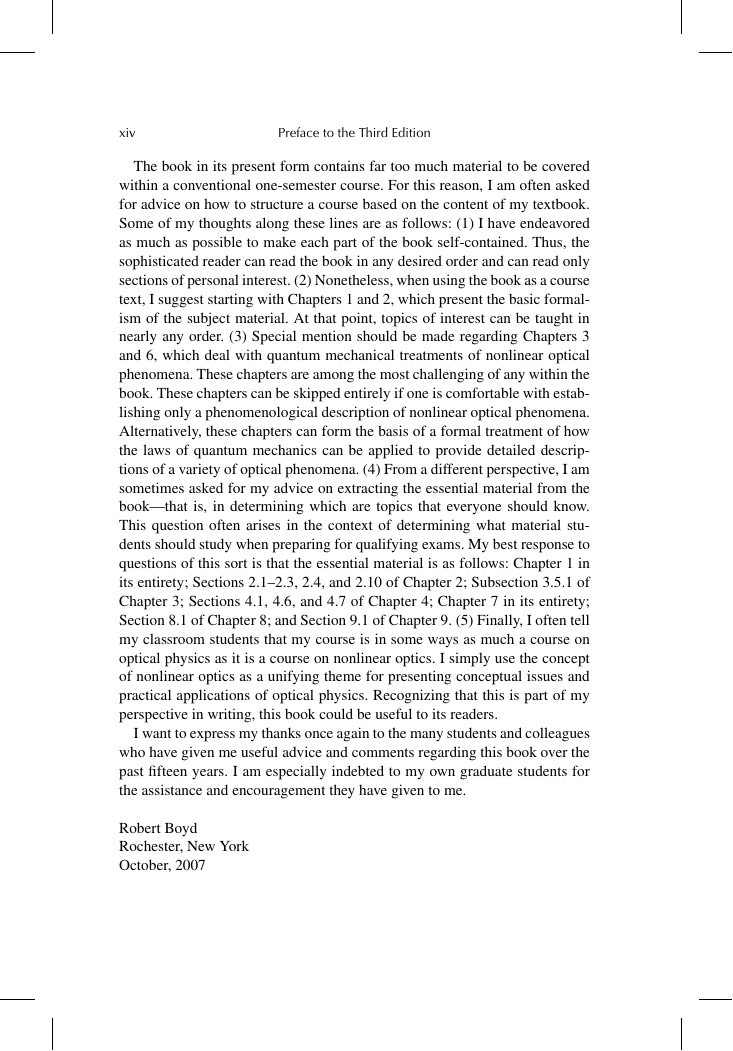








 2023年江西萍乡中考道德与法治真题及答案.doc
2023年江西萍乡中考道德与法治真题及答案.doc 2012年重庆南川中考生物真题及答案.doc
2012年重庆南川中考生物真题及答案.doc 2013年江西师范大学地理学综合及文艺理论基础考研真题.doc
2013年江西师范大学地理学综合及文艺理论基础考研真题.doc 2020年四川甘孜小升初语文真题及答案I卷.doc
2020年四川甘孜小升初语文真题及答案I卷.doc 2020年注册岩土工程师专业基础考试真题及答案.doc
2020年注册岩土工程师专业基础考试真题及答案.doc 2023-2024学年福建省厦门市九年级上学期数学月考试题及答案.doc
2023-2024学年福建省厦门市九年级上学期数学月考试题及答案.doc 2021-2022学年辽宁省沈阳市大东区九年级上学期语文期末试题及答案.doc
2021-2022学年辽宁省沈阳市大东区九年级上学期语文期末试题及答案.doc 2022-2023学年北京东城区初三第一学期物理期末试卷及答案.doc
2022-2023学年北京东城区初三第一学期物理期末试卷及答案.doc 2018上半年江西教师资格初中地理学科知识与教学能力真题及答案.doc
2018上半年江西教师资格初中地理学科知识与教学能力真题及答案.doc 2012年河北国家公务员申论考试真题及答案-省级.doc
2012年河北国家公务员申论考试真题及答案-省级.doc 2020-2021学年江苏省扬州市江都区邵樊片九年级上学期数学第一次质量检测试题及答案.doc
2020-2021学年江苏省扬州市江都区邵樊片九年级上学期数学第一次质量检测试题及答案.doc 2022下半年黑龙江教师资格证中学综合素质真题及答案.doc
2022下半年黑龙江教师资格证中学综合素质真题及答案.doc